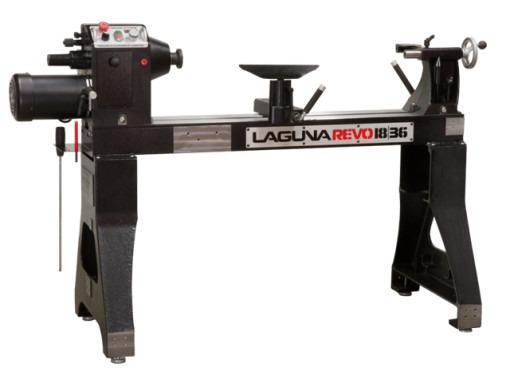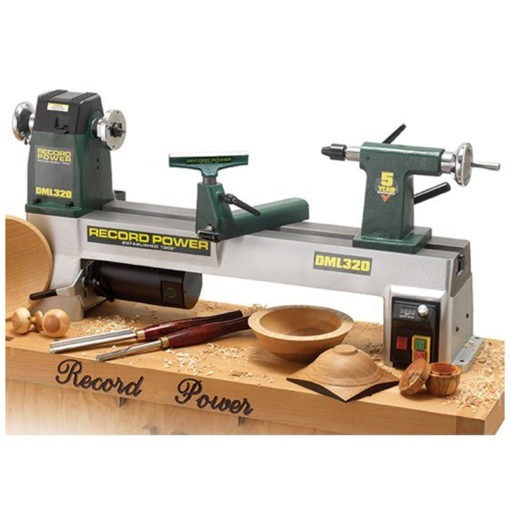Woodturning Tips
Buying A Wood Lathe – Best Choice Wood Lathes For Sale
1. Start with Proper Safety Gear
- Wear Safety Glasses/Face Shield: Protect your eyes from flying chips and dust.
- Use Dust Protection: A dust mask or respirator will help protect your lungs.
- Hearing Protection: Woodturning can be noisy, so ear protection is recommended.
- Tight Clothing: Avoid loose clothing that could get caught in the lathe.
2. Understand Your Tools
- Learn Tool Functions: Familiarize yourself with the different tools (e.g., gouges, scrapers, parting tools) and their specific uses.
- Keep Tools Sharp: Sharp tools are safer and provide cleaner cuts. Regularly sharpen your tools using a grinder or sharpening system.
- Tool Rest Position: Adjust the tool rest so that your tools can comfortably reach the workpiece without overextending.
3. Wood Selection
- Choose Quality Wood: Start with softer woods like pine or poplar. Avoid wood with knots or cracks as they can be challenging to work with.
- Seasoned Wood: Use seasoned or dried wood to avoid warping or splitting after turning.
4. Lathe Speed
- Adjust According to Size: For larger pieces, use a slower speed; for smaller, more detailed work, a faster speed is appropriate.
- Test Before Turning: Always start the lathe at a slow speed to ensure the workpiece is securely mounted before increasing speed.
5. Proper Workpiece Mounting
- Secure the Workpiece: Ensure the wood is securely fastened to the lathe, whether using a faceplate, chuck, or spindle.
- Check Alignment: The workpiece should be balanced and centered on the lathe to prevent wobbling.
6. Focus on Technique
- Use Both Hands: Maintain control by using both hands on the tool, one on the handle and the other guiding the tool against the tool rest.
- Light Pressure: Apply light pressure and let the tool do the work. Heavy-handedness can lead to accidents and uneven work.
- Cut with the Grain: Whenever possible, work with the grain of the wood to achieve smoother cuts and reduce tear-out.
7. Practice Makes Perfect
- Start with Simple Projects: Begin with basic shapes like cylinders or beads before moving on to more complex projects.
- Experiment with Techniques: Try different cuts and tool angles to see how they affect the wood. Practice makes a huge difference in developing a steady hand and understanding tool dynamics.
8. Maintain Your Lathe
- Regular Cleaning: Keep your lathe clean and free from dust and debris. This will prolong its life and ensure smooth operation.
- Check for Wear: Periodically inspect the belts, bearings, and other parts for wear and replace them as needed.
9. Finish and Sanding
- Sand While the Lathe is Running: Start with coarse sandpaper and move to finer grits, sanding along the grain. Keep the sandpaper moving to avoid creating heat that could burn the wood.
- Apply Finishes Carefully: With the lathe running at a slow speed, apply your chosen finish evenly. Consider using oils, waxes, or lacquers depending on your project.
10. Join a Community
- Seek Advice and Inspiration: Join a woodturning club or online forum where you can ask questions, share projects, and learn from more experienced turners.
- Watch Tutorials: There are many online resources, including videos and tutorials, to help you learn new techniques and improve your skills.
11. Patience and Safety
- Don’t Rush: Take your time, especially when starting a new project or learning a new technique.
- Stay Focused: Always stay focused on the task at hand. Distractions can lead to mistakes or accidents.
Woodturning is a rewarding craft, and with practice, you can create beautiful, functional pieces. Enjoy the process, and don’t hesitate to experiment and make mistakes—that’s how you learn!
Call
(03) 9720 1678
Address
Shop & Showroom – Shop 3/477 Dorset Road, Bayswater Victoria 3153
dean@mmvic.com.au






